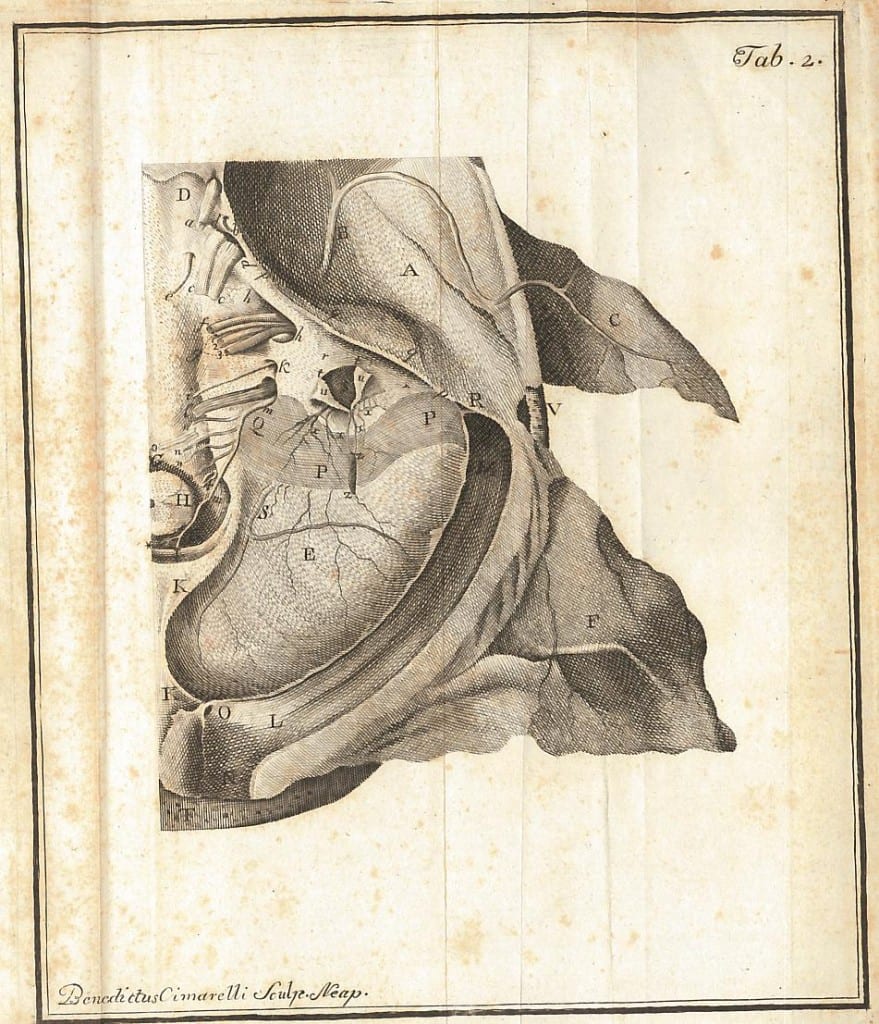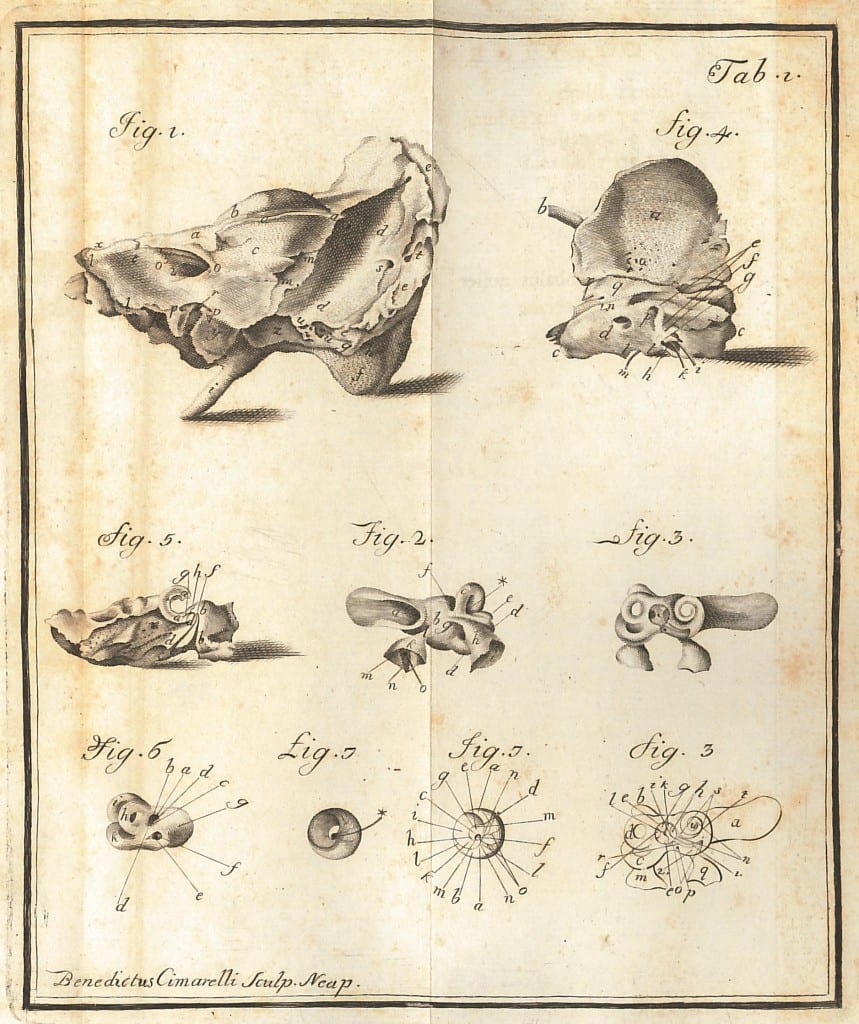Domenico Cotugno (1736-1822) De aquaeductibus auris humane internae anatomica dissertatio
By H Dominic W Stiles, on 4 October 2013
Until the middle of the 18th century, thinking about the way the inner ear worked was still dominated by Aristotle’s idea of “aer implantus”.
There were only a few who dared to speak out against this view. Schelhammer in 1684 expressed a doubt that there was an implanted air in the ear, but offered no substitute. Valsalva (1704), Vieussens (1714), and Cassebohm (1734) suggested the prescence of fluid but made little of it for they still spoke of the “aer implantus.” In 1739, Boerhaave quite specifically spoke of the prescence of fluid in the labyrinth. (Bast and Anson 1949)
Domenico Cotugno, a pioneer of neuroscience, was the first person to prove the presence of a serous fluid in the labyrinth and the first to associate this with sound transmission. He believed that sound waves move the stapes which in turn move the labyrinthine fluid, considered that tones could be perceived by the semicircular canals but were analyzed in the cochlea (ibid).
When he was only 25, in 1761, his dissertation, Aquaeductibus auris humane internae, predated the work of Hermann von Helmholtz. In it he described the vestibule, semicircular canals, and cochlea. He demonstrated the labyrinthine fluid, and considered mechanisms of resonance, sound transmission, and hearing. He depicted the columns in the bony spiral lamina of the cochlea known as Cotunnius’ columns. His description of the nasopalatine nerve, and its role in sneezing anticipated Antonio Scarpa’s work. (Pearce 2004)
Born in Ruvo di Puglia, Cotugno was educated at a Jesuit school then was sponsored by the Duke d’Andria to attend the University of Naples, working in the Ospedale degli Incurabili. He spent many hours studying in the library, a time he said that was the happiest of his life (hint!). He received his doctorate from the Salerno Medical School in 1756.
Cotugno is an outstanding example of a humanistic physician. I addition to being one of the most prominent scientists of his time, he was also interested in art, architecture, nusismatics and antiquities. He accumulated a remarkable private library, a small part of which is still conserved in the Biblioteca Nazionale in Naples (Böni et al 1994)
When he died he left a large sum of money to the Ospedale degli Incurabili, now known as the Ospedale Domenico Cotugno.
His two illustrations from Auris humane are shown here.
De aquaeductibus auris humane internae anatomica dissertatio. 1761
Böni T, Benini A, Dvorak J. Domenico Felice Antonio Cotugno. Spine (Phila Pa 1976). 1994 Aug 1;19(15):1767-70
Theodore H. Bast and Barry J. Anson. The temporal bone and the ear. 1949
 Close
Close



